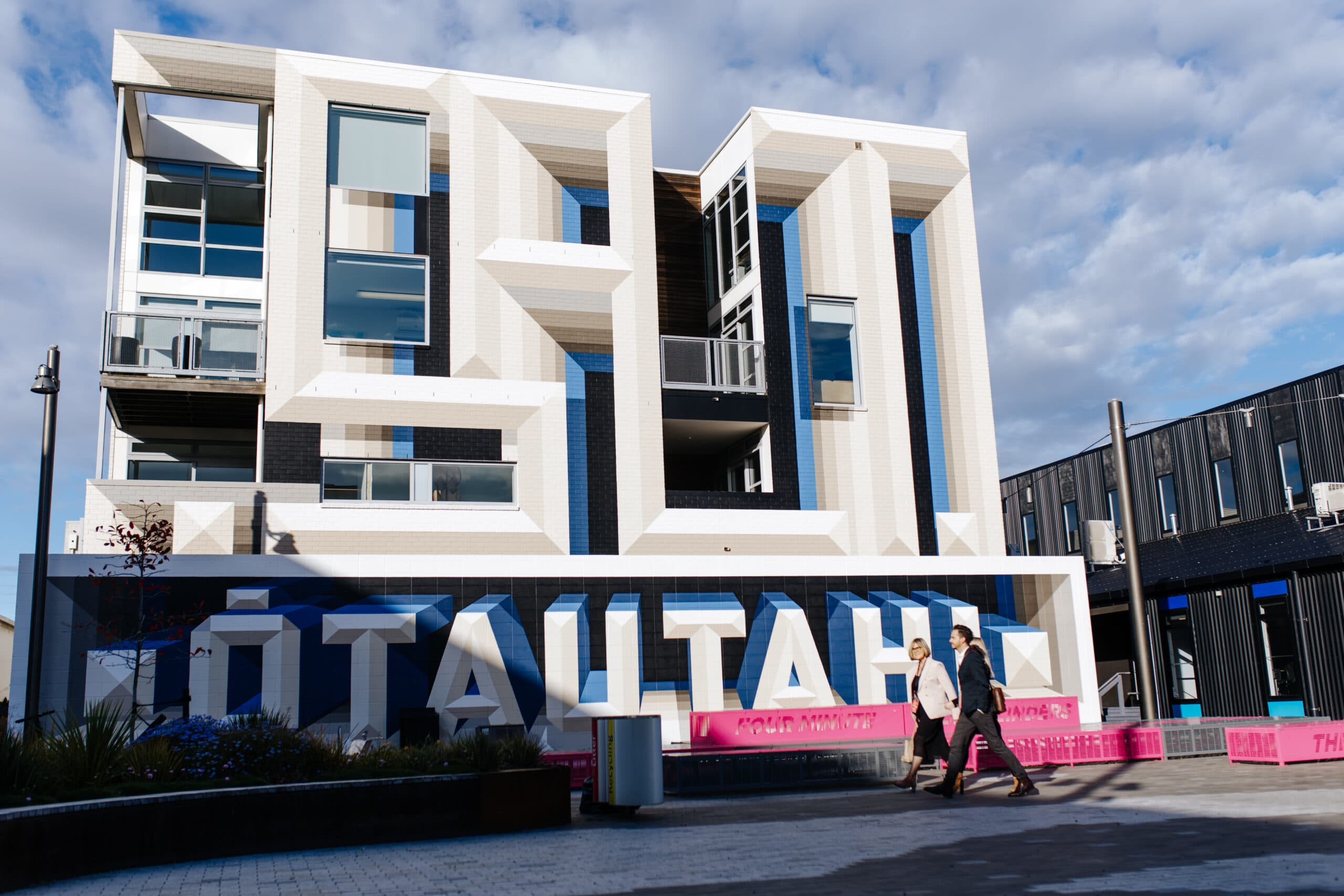When it comes to getting things done in a crisis does it matter who holds the wrench?
For those of us connected to Ōtautahi Christchurch (and for many others in our national and global communities), the past decade has been a constant exercise in living outside our comfort zone. Rarely has there been enough time to recover from one crisis or intractable problem, before we are again faced with the uncertainty, disruption and trauma of the next. Amidst the fatigue, fear and loss, people across local and central government, the private sector and local communities have dedicated their personal and professional resources to planning and facilitating the recovery and regeneration of this beautiful but broken city.
People – not nameless, faceless entities but people. People who have been challenged every day for a decade to solve problems never before encountered. People who have worked assiduously to leave Ōtautahi better than they found it. People who have risked their fortunes and reputations to fix in a decade what was broken in minutes. It has been, and continues to be, an enormous privilege to work alongside such people and to honour the legacy they are creating.
So does that mean that individually or collectively we got everything right? No. There are many critical lessons we can and should learn from the events of the last decade. For me, the most pertinent and pressing is this – when the bus breaks down on the side of the road and someone hands you a toolbox, don’t spend the first hours (or months and years!) arguing about who gets to use the tools or whether we even need them. Work together, use all of the tools available and fix the damn bus so that everyone can keep moving. At the risk of labouring the analogy, in 2010, 2011, and again in 2016, Parliament handed Ōtautahi a fully equipped toolbox and, from where I sit, we squandered much of that opportunity by arguing about who should hold the wrench.
This article is borne of experience and some (barely disguised) frustration from a decade advising on the recovery and regeneration legislation put in place following the 2010/2011 earthquakes.
It is reinforced by our experience with the Housing Accords and Special Housing Areas Act 2013 and more recently with the COVID-19 Recovery (Fast-track Consenting) Act 2020. In each case, these Acts were passed in response to a specific crisis, with Parliament determining that the standard legislative tools would, in some way, be inadequate to meet the challenge at hand.
Yet, despite the various advantages offered by these statutes, rather than being embraced, they have all too often been resisted. As the “powers that be” argue about whether the tools are needed and if so, who should wield them, communities plod on, unaided by the tools specifically designed to assist them to recover and rebuild.
The Canterbury Earthquake Response and Recovery Act 2010, the Canterbury Earthquake Recovery Act 2011, the Greater Christchurch Regeneration Act 2016, and the Christ Church Cathedral Reinstatement Act 2017 all granted extraordinary powers to enable the expedited recovery and regeneration of greater Christchurch following the earthquakes. Many of the “tools” within these Acts were based on existing legislation including the Public Works Act 1981 (compulsory acquisition) and the Civil Defence and Emergency Management Act 2002 (demolition of dangerous building, restricting access to specific areas/properties). More unique, however, was the Minister’s ability to suspend, revoke or direct amendments to Resource Management Act 1991 documents, amend primary legislation through Orders-in-Council, and direct councils to take or not take any action or to make or not make any decision.
Importantly, the outcomes sought under this suite of legislation were clearly defined within each Act, encompassing all aspects of community wellbeing and resilience. Developments which supported restoration, enhancement or improvement in wellbeing (including environmental wellbeing) could prima facie qualify for use of these powers, where that use could “reasonably be considered necessary”. While more truncated from that which would otherwise be allowed under the RMA (including, most significantly through the removal of appeal rights), opportunities for public participation in recovery and regeneration planning decisions remained and were arguably deployed more effectively – at early visioning stages where the process was more accessible to a wider range of people.
Put simply, the legislation provided a comprehensive, fit for purpose, bespoke response to the challenges greater Christchurch faced. Why then, were these tools used so sparingly?
Consistent public statements about “controversial” exercises of power, central government “intervention” and a desire to return to “local leadership” suggest that, at least in some instances, the alternative mechanisms of these statutes were seen as an unwarranted attack on local autonomy. That approach, however, denies (or at least ignores) the substantial hurdles that “standard” processes present to addressing crisis issues including:
- an increasingly complex and convoluted decision-making framework which requires decision-makers to weigh and seek to balance a multitude of different statutory and policy considerations;
- risk of delay (and actual delay) resulting from appeals to planning documents and resource consent decisions which either discourage development altogether, or add to its complexity and cost;
- growing capacity constraints within local government as a result of an increasing number of obligations across multiple areas of responsibility; and
- greater sensitivity from decision-makers as to precedent risk and public accountability.
These matters have all been acknowledged in various reports and reviews as factors which have impeded the success of our urban and natural environments and our ability to respond to crisis issues. They are also acknowledged through the passage of special purpose legislation such as the earthquake Acts which sought to alleviate or at least ameliorate these identified constraints. In that light, it is difficult to then understand why such interventions were so sparingly embraced particularly when, in the case of the earthquakes, they were so desperately needed.
More so too, when one considers that, deployed well, the legislation clearly served its purpose. The Christchurch Central Recovery Plan enabled significant private sector investment to progress quickly within a clearly articulated framework. The expanded use of Hagley Oval for international cricket was enabled beyond the constraints placed on it under the RMA, meaning the city can now play host to the International Women’s Cricket World Cup final. Redcliffs School was relocated and rebuilt significantly more quickly than a contested RMA process would have allowed and the vision for the Otakaro Avon River Corridor was established and enshrined.
But we could have, and arguably, should have, done more with the opportunity the legislation presented.
What then can we take forward from these observations? First and foremost, it is our strongly held view, that where Parliament sees fit to provide specific “toolkits” for addressing crisis issues, it is incumbent on the recipients of those powers to seize that advantage for the benefit of the communities they serve. Our local authorities, central Government, advisory boards, and special purpose agencies must embrace the mandate afforded through these interventions, see these tools as critical and necessary advantages for our communities rather than as threats or impediments, and then use them at every available opportunity.
Coming to grips with the mandate and the tools given to deliver it, will inevitably involve some risk. The extent of powers will not always be clear, and testing new processes and mechanisms will always feel unfamiliar, at least initially. This should not however prevent or discourage agencies from exploring how they can best comply with the direction given to them by Parliament. Further, while a successful judicial review is costly (in terms of time, money and reputation), it too should not be seen as sign of failure. The various decisions of the High Court, Court of Appeal and Supreme Court on the exercises of power under the CER Act provided extremely useful guidance on the reach of the legislation – guidance which critically informed the way in which that Act and the GCR Act which followed was utilised. Sometimes, in other words, “skinning your knees” is the only way to identify where the ground is.
The era of earthquake legislation is all but over, with only a few remaining provisions of the GCR Act still in play. We hope, of course, that there will never be further need for it or anything similar. But there other crises across the country, from ageing/inadequate infrastructure and a shortage of quality housing, to the impacts of global heating and the health of our water which require urgent attention. We are also in the midst of a global pandemic.
The COVID-19 Recovery (Fast-track Consenting) Act 2020 is a valuable tool-kit that Parliament has enacted to support development which contributes to New Zealand’s economic and social recovery from the impacts of the pandemic. How many of our agencies particularly in the public sector have come to grips with the opportunity presented by that legislation, and have already identified projects with economic and employment benefits that could be accelerated through this process? How many have sat down with their development community, presented this opportunity, and committed to working through the process?
Time is ticking. The legislation is set to expire in July 2022. Will we spend the next six months arguing about whether it is the appropriate process for the job or will we take hold of the mandate given by Parliament and use these tools to accelerate the delivery of critical infrastructure, housing, and environmental restoration projects that also bring employment and economic benefits?
For the wellbeing of our communities and our environment both now and in the long term, let’s make it the latter. It doesn’t matter who holds the wrench – we need to get the bus moving.
Author | Lauren Semple

Lauren combines her legal knowledge with an in-depth understanding of the development sector, offering pragmatic and highly effective strategies to accelerate the consenting of major projects. She is a Chartered Member of the Institute of Directors, a Crown appointee of the Christchurch Stadium Trust and the Otago Community Trust, Chair of the St Hilda’s Board of Trustees and Director of Mercy Hospital Limited.

